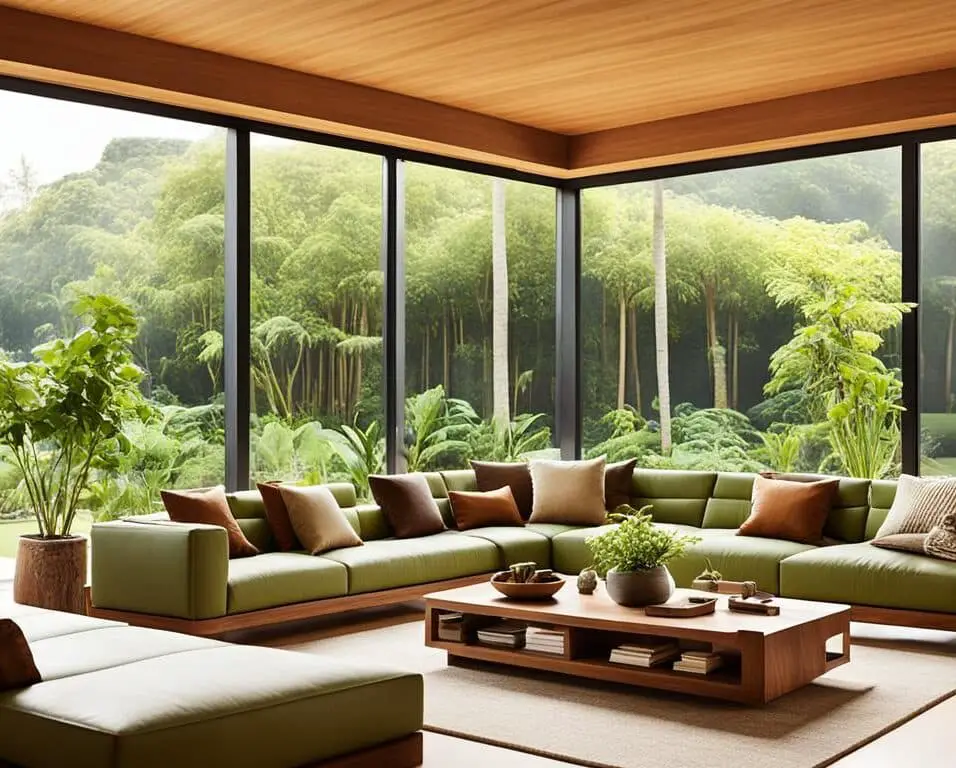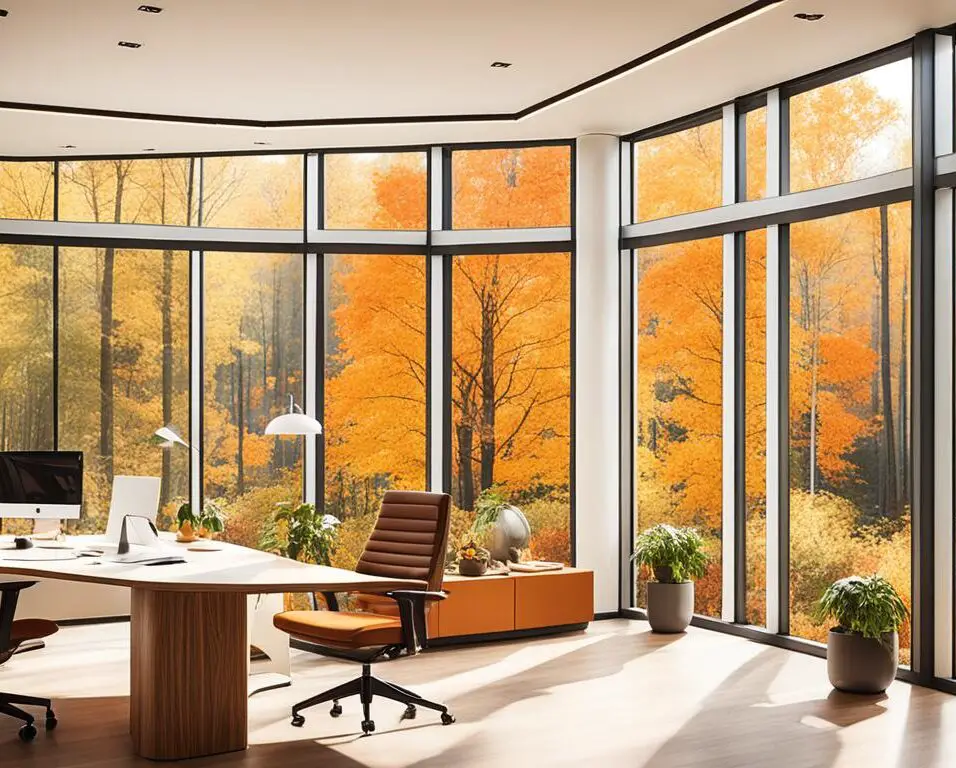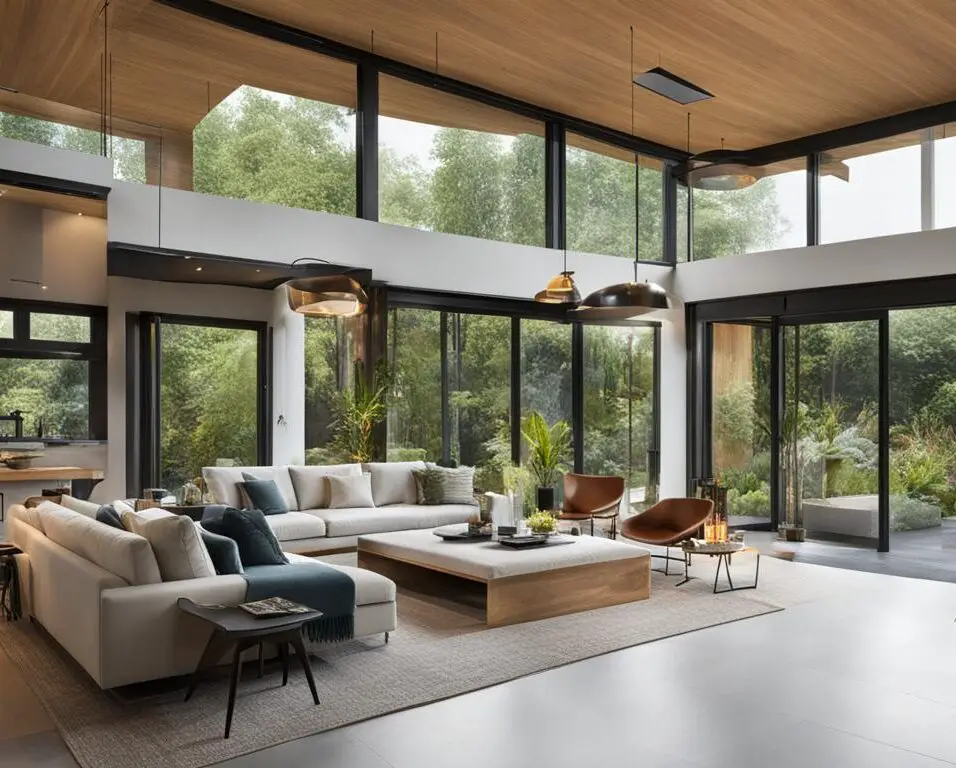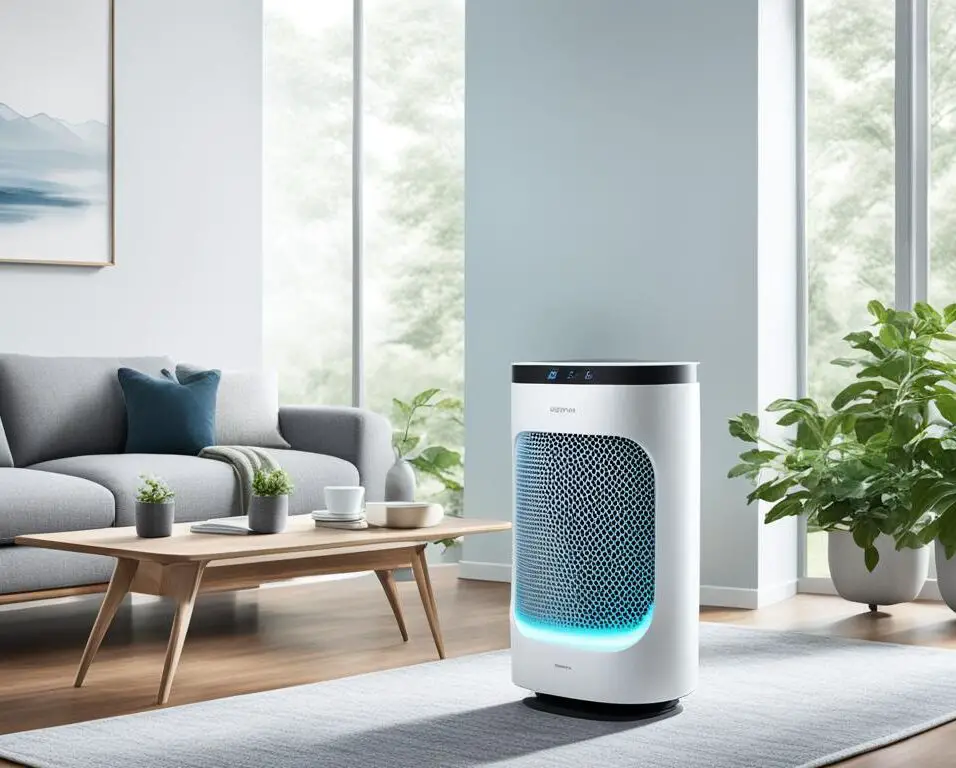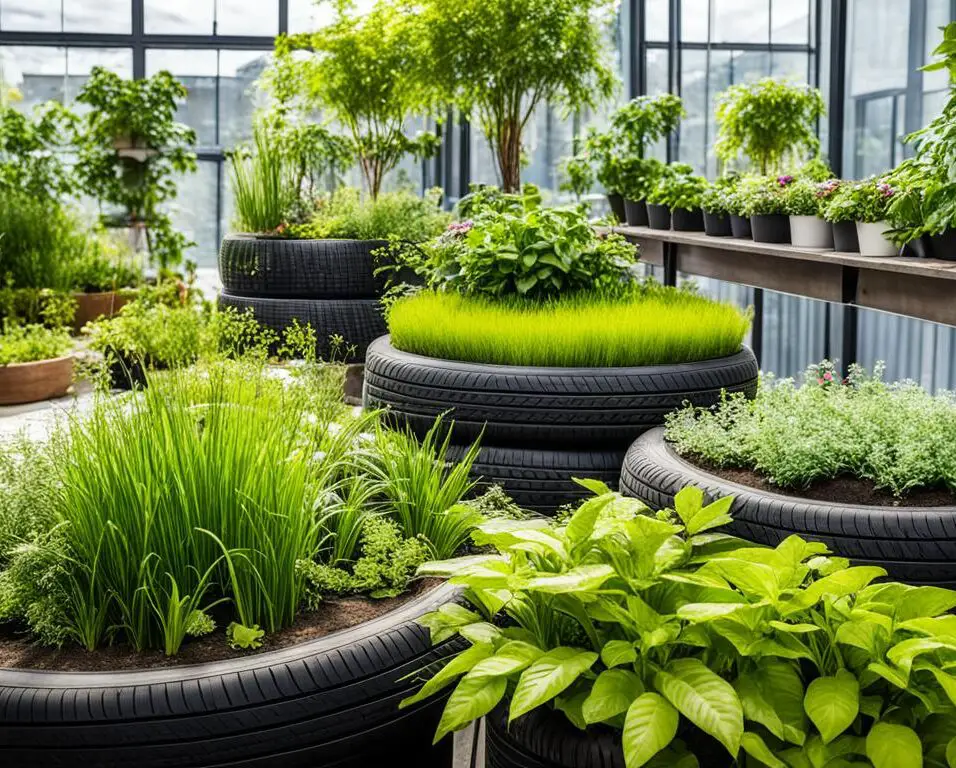Adapting to the Extreme: Biophilic Design in Harsh Climates
When it comes to architecture and design, incorporating natural elements into the built environment has become an increasingly popular approach. Biophilic design, as it is known, aims to connect people with nature and create spaces that promote well-being and sustainability. While biophilic design has been successfully implemented in various climates, its adaptation to extreme and harsh climates presents unique challenges and opportunities.
In extreme climates characterized by harsh weather conditions, such as extreme temperatures, strong winds, and unpredictable weather patterns, the implementation of biophilic design requires thoughtful consideration. However, the benefits it can bring are manifold. By embracing biophilic design principles in extreme climates, architects and designers can create spaces that not only withstand the challenges of the environment but also enhance the well-being of the occupants and contribute to energy efficiency and ecological sustainability.
Implementing biophilic design in extreme climates involves strategies that make the most of the unique conditions. This includes incorporating weather-resistant materials, utilizing natural ventilation, maximizing natural light, and creating outdoor spaces for connection with nature. By blending these strategies with biophilic design principles, architects can create spaces that are both sustainable and comfortable, even in the most extreme environments.
In recent years, numerous case studies have exemplified the successful implementation of biophilic design in extreme climates. These projects showcase how architects and designers have integrated natural elements to build resilient and harmonious spaces in challenging environments. For example, the Svart Hotel in Norway, located above the Arctic Circle, incorporates sustainable features such as solar panels and circular design to maximize energy efficiency and take advantage of the stunning natural surroundings.
As we look to the future, the possibilities in biophilic design for extreme climates are boundless. Advances in technology and materials are enabling the development of more innovative and efficient solutions. Smart sensors and automation systems can optimize energy use, while research into the psychological and physiological effects of biophilic design can further inform the design process and lead to evidence-based practices.
In conclusion, biophilic design in extreme climates is not only possible but also essential for creating sustainable and resilient spaces. By incorporating natural elements and embracing biophilic design principles, architects and designers can create environments that improve well-being, enhance energy efficiency, and promote ecological sustainability, even in the harshest conditions.
Key Takeaways:
- Biophilic design aims to connect people with nature and incorporate natural elements into the built environment.
- In extreme climates, biophilic design faces unique challenges but offers significant benefits such as improved well-being, energy efficiency, and ecological sustainability.
- Strategies for implementing biophilic design in extreme climates include using weather-resistant materials, maximizing natural light, and creating outdoor spaces connected to nature.
- Case studies, such as the Svart Hotel in Norway, demonstrate the successful integration of biophilic design in extreme climates.
- Challenges in biophilic design for extreme climates can be overcome through innovative design and engineering.
The Benefits of Biophilic Design in Extreme Climates
Biophilic design in extreme climates offers a range of benefits. First and foremost, it enhances the well-being of individuals by providing access to nature and natural light, which can improve mood, productivity, and overall health. Additionally, biophilic design can improve energy efficiency by incorporating features such as natural ventilation, green roofs, and passive cooling systems. It also promotes ecological sustainability by using local materials, preserving biodiversity, and reducing the impact on the surrounding environment. In extreme climates, biophilic design can help create resilient and adaptable spaces that can withstand and respond to the challenges of the environment.
| The Benefits of Biophilic Design in Extreme Climates |
|---|
Strategies for Implementing Biophilic Design in Extreme Climates
Implementing biophilic design in extreme climates requires careful consideration of the specific challenges and conditions of the environment. By blending the principles of biophilic design with the unique demands of extreme climates, it is possible to create spaces that are both sustainable and comfortable.
Here are some key strategies for implementing biophilic design in extreme climates:
- Use weather-resistant materials: Select materials that can withstand harsh weather conditions, such as extreme temperatures, high winds, and heavy precipitation. This ensures the longevity and durability of the design.
- Incorporate green roofs and walls: Integrate living vegetation on rooftops and walls to provide insulation, reduce heat gain, and enhance the aesthetic appeal of the space. Green roofs and walls also promote biodiversity and improve air quality.
- Maximize natural light: Incorporate large windows and skylights to optimize the use of natural light. This not only reduces the reliance on artificial lighting but also creates a connection with the outdoors, enhancing the biophilic experience.
- Create outdoor spaces for connection with nature: Design outdoor areas that encourage interaction with the natural environment. This can include gardens, courtyards, and terraces where people can immerse themselves in nature and experience its calming effects.
- Design for energy efficiency: Implement energy-efficient strategies, such as passive heating and cooling systems, to reduce the reliance on artificial climate control. This not only minimizes energy consumption but also enhances the sustainability of the design.
By following these strategies, architects and designers can successfully integrate biophilic design principles into extreme climates, creating resilient, sustainable, and comfortable spaces that prioritize the well-being of occupants.
Benefits of Strategies for Implementing Biophilic Design in Extreme Climates
| Strategy | Benefit |
|---|---|
| Weather-resistant materials | Ensure longevity and durability of design |
| Green roofs and walls | Provide insulation and improve air quality |
| Natural light optimization | Reduced reliance on artificial lighting and connects with the outdoors |
| Outdoor spaces for connection with nature | Promotes interaction with the natural environment and offers calming effects |
| Design for energy efficiency | Minimize energy consumption and enhance sustainability |
Case Studies: Biophilic Design in Extreme Climates
Several case studies highlight successful examples of biophilic design in extreme climates.
In Norway, the Svart Hotel is being built above the Arctic Circle, showcasing the potential of biophilic design in extreme climates. The hotel’s circular shape not only maximizes breathtaking views but also serves as an energy-efficient feature. Solar panels integrated into the structure harness renewable energy to power the hotel, reducing its environmental impact. The Svart Hotel exemplifies the harmonious blend of sustainable design and natural beauty.
In Singapore, the Gardens by the Bay project stands as a testament to the transformative power of biophilic design. The project seamlessly integrates lush greenery, sustainable water management systems, and climate-responsive structures. These elements create immersive and rejuvenating spaces that bring people closer to nature. Furthermore, the Gardens by the Bay project helps combat the urban heat island effect, mitigating the challenges posed by Singapore’s tropical climate.
These case studies demonstrate the real-world application of biophilic design in extreme climates. From the frozen landscapes of Norway to the tropical oasis in Singapore, these projects showcase how biophilic design principles can create both unique and innovative spaces that promote sustainability, well-being, and a deep connection with the surrounding environment.
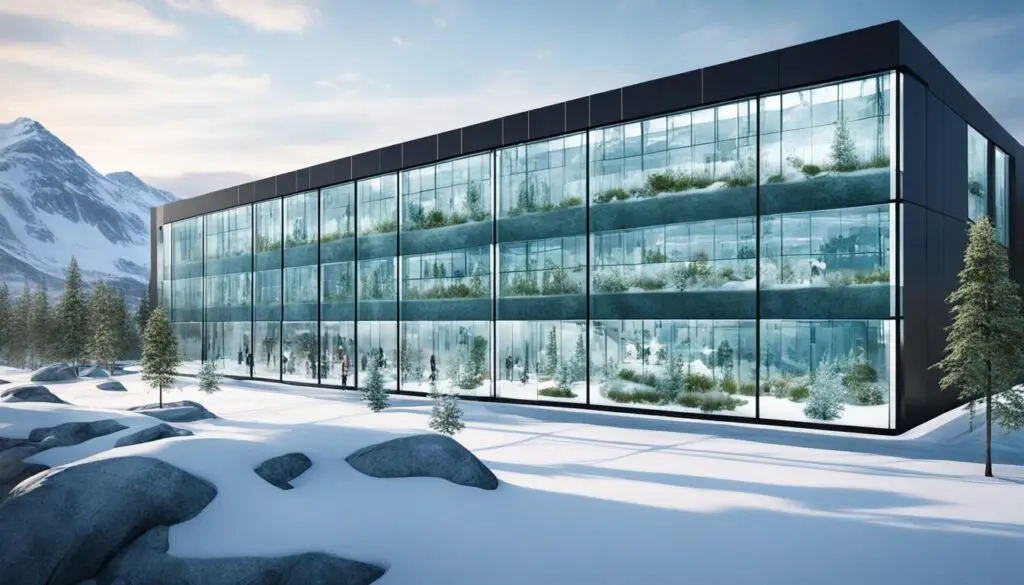
Overcoming Challenges in Biophilic Design for Extreme Climates
Implementing biophilic design in extreme climates comes with its fair share of challenges. The harsh weather conditions, including extreme temperatures, strong winds, and unpredictable weather patterns, can pose obstacles to integrating natural elements and maintaining sustainable features. However, through careful design and engineering, these challenges can be overcome, ensuring the long-term sustainability and resilience of the built environment.
Passive heating and cooling strategies play a vital role in optimizing biophilic design for extreme climates. By harnessing natural elements such as sunlight and wind flow, these strategies not only minimize energy consumption but also improve indoor comfort. Proper insulation is another key factor in ensuring temperature regulation, reducing heat transfer to the interior during hot summer months and preventing heat loss during cold winter months.
Appropriate plant selection is crucial in biophilic design for extreme climates. Choosing plants that are resilient to the specific climatic conditions helps to maintain a green and thriving environment. These plants should be able to withstand temperature extremes, high winds, and limited water availability.
Furthermore, incorporating biophilic design elements that are specifically engineered to withstand extreme climates is essential. This includes selecting durable and weather-resistant materials, designing structures that can withstand strong winds and heavy snow loads, and implementing effective stormwater management systems.
| Challenges | Strategies to Overcome |
|---|---|
| Extreme temperatures | Utilize passive heating and cooling strategies, proper insulation |
| Strong winds | Use weather-resistant materials, design structures to withstand wind loads |
| Unpredictable weather patterns | Implement effective stormwater management systems |
| Plant selection | Select plants resilient to extreme climates |
By overcoming these challenges, biophilic design can thrive in extreme climates, creating spaces that not only connect individuals with nature but also contribute to the overall well-being and sustainability of the built environment.
Future Trends in Biophilic Design for Extreme Climates
The future of biophilic design in extreme climates is brimming with potential. As technology and materials continue to advance, designers and architects can create more innovative and efficient solutions that integrate seamlessly with nature. One exciting trend is the utilization of smart sensors and automation systems, which can optimize energy use and enhance the performance of biophilic design features. Furthermore, ongoing research into the psychological and physiological effects of biophilic design will lead to more evidence-based practices, ensuring the well-being of occupants and fostering a deeper connection to the natural environment.
In the face of climate change, the relevance of biophilic design in extreme climates is only set to increase. As we experience shifting weather patterns and more frequent extreme events, the need for sustainable and resilient design solutions becomes imperative. Biophilic design offers the opportunity to create spaces that not only mitigate the effects of extreme climates but also regenerate and harmonize with the surrounding ecosystem.
Advances in Technology and Materials
One of the key drivers of future trends in biophilic design for extreme climates is the continuous advancement of technology and materials. These advancements enable the creation of more efficient and cutting-edge design solutions that adapt to the specific challenges of extreme climates. For example, the integration of smart sensors allows for real-time monitoring and adjustment of environmental conditions, optimizing energy use and ensuring the comfort of occupants.
| Future Trends in Biophilic Design | Benefits |
|---|---|
| Integration of nanotechnology | Enhances material strength and durability, enabling the construction of resilient structures that withstand extreme weather conditions. |
| Advancements in sustainable building materials | Offers a wider range of options for incorporating natural elements into design, increasing aesthetic possibilities while reducing environmental impact. |
| Innovation in energy-efficient systems | Enables the creation of self-sustaining buildings that harness renewable energy sources and minimize reliance on external resources. |
As we harness the potential of new technologies and materials, biophilic design can push the boundaries of what is possible in extreme climates, creating spaces that seamlessly blend with nature and provide a high quality of life for occupants.
Research and Evidence-Based Practices
Another crucial factor driving future trends in biophilic design is the ongoing research into the effects of nature on human well-being. This research provides valuable insights that inform the design process and promote evidence-based practices. By understanding the psychological and physiological benefits of biophilic design elements, designers can optimize the integration of natural elements into the built environment, fostering a sense of calm, well-being, and connection to nature.
“Biophilic design has the potential to transform our buildings and cities into spaces that prioritize the well-being and satisfaction of their occupants, while also promoting environmental sustainability and resilience.” – Dr. Rachel Kaplan, Environmental Psychologist
Continued research allows for the refinement and evolution of biophilic design principles, ensuring their effectiveness and relevance in extreme climates. With a growing body of knowledge, designers and architects can create spaces that holistically address the needs of both humans and the natural world.
- Integration of biophilic design principles into urban planning.
- Development of standardized guidelines for implementing biophilic design in extreme climates.
- Collaboration between researchers, designers, and policymakers to shape building codes and regulations that prioritize sustainable and biophilic design.
By embracing these future trends and advancing the field of biophilic design, we can transform our built environment to be in harmony with the extreme climates we inhabit, enhancing the well-being of occupants while protecting and preserving our natural surroundings.
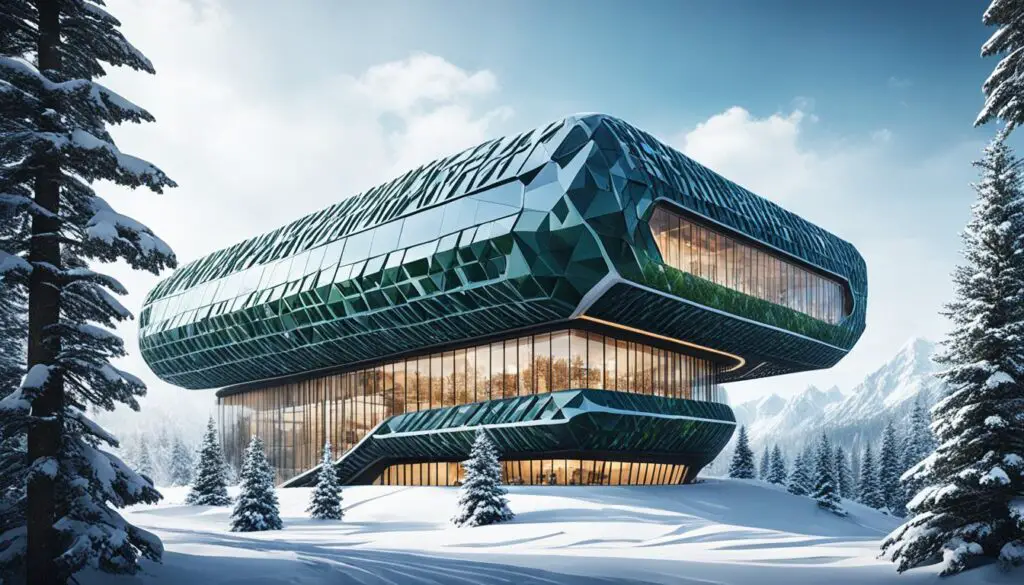
Conclusion
Biophilic design in extreme climates offers a powerful solution for creating sustainable and resilient spaces. By integrating natural elements and the principles of biophilic design, architects and designers can improve well-being, enhance energy efficiency, and promote ecological sustainability. Despite the challenges posed by extreme climates, innovative strategies and technologies are making it increasingly feasible to implement biophilic design in these environments.
Biophilic design not only connects people with nature but also creates a sense of harmony between humans and the natural world. It enhances well-being by providing access to nature and natural light, contributing to improved mood, productivity, and overall health. Additionally, by incorporating features such as natural ventilation and passive cooling systems, biophilic design improves energy efficiency, reducing the environmental impact and operating costs of buildings in extreme climates.
As we adapt to an ever-changing climate and face the realities of extreme weather conditions, biophilic design offers a pathway towards a more sustainable and connected future. By utilizing weather-resistant materials, maximizing natural light, and designing for energy efficiency, we can create spaces that are both comfortable and resilient. Through the integration of biophilic design principles and the advancements in technology and materials, we can continue to push the boundaries of sustainable design in extreme climates.
In conclusion, biophilic design is a crucial component in addressing the challenges of extreme climates. It not only enhances the well-being and productivity of individuals but also contributes to the preservation and sustainability of our environment. As we strive for a more sustainable future, embracing biophilic design in extreme climates is an essential step towards creating spaces that are in harmony with nature and promote a healthier and more resilient way of living.
FAQ
What is biophilic design?
Biophilic design is a concept that aims to connect people with nature by incorporating natural elements into the built environment.
What are extreme climates?
Extreme climates refer to regions with harsh weather conditions that present unique challenges and opportunities for biophilic design.
What are the benefits of biophilic design in extreme climates?
Biophilic design in extreme climates enhances well-being, improves energy efficiency, and promotes ecological sustainability.
What are some strategies for implementing biophilic design in extreme climates?
Strategies include using weather-resistant materials, incorporating green roofs and walls, maximizing natural light, creating outdoor spaces, and designing for energy efficiency.
Can you provide examples of biophilic design in extreme climates?
Yes, for instance, the Svart Hotel in Norway and the Gardens by the Bay project in Singapore showcase successful integration of biophilic design in extreme climates.
What challenges are there in implementing biophilic design in extreme climates?
Extreme temperatures, strong winds, and unpredictable weather patterns can pose challenges, but careful design and engineering can overcome these obstacles.
What is the future of biophilic design in extreme climates?
The future holds promising possibilities with advancements in technology, materials, and research, leading to more innovative and efficient biophilic design solutions.




